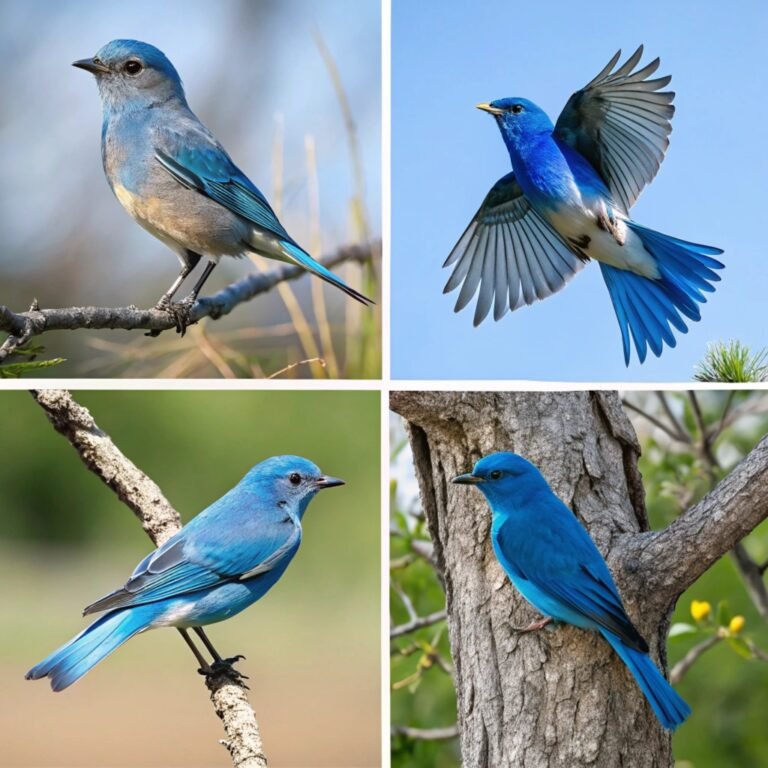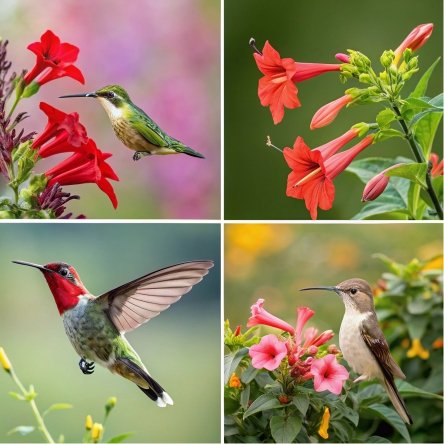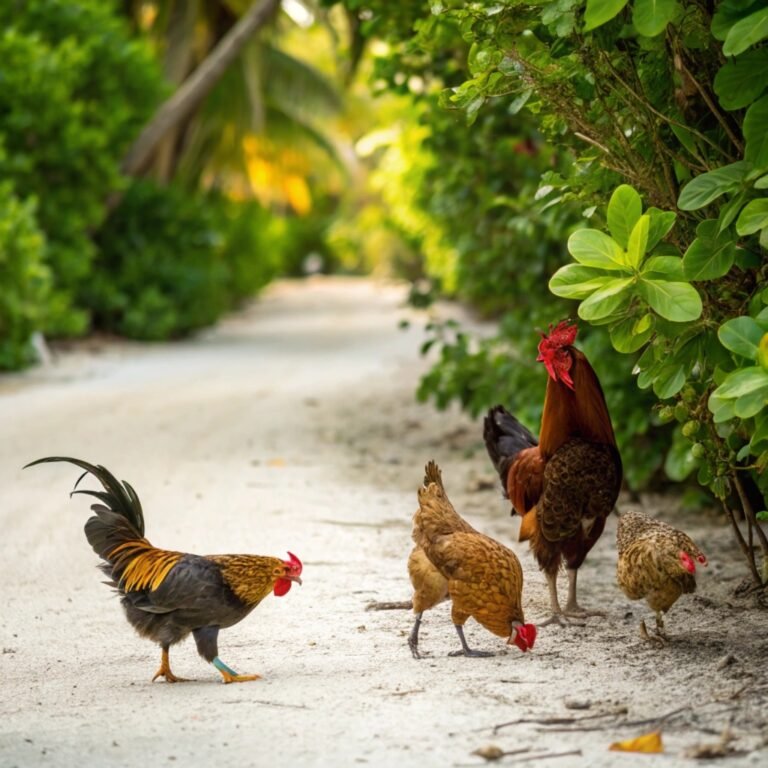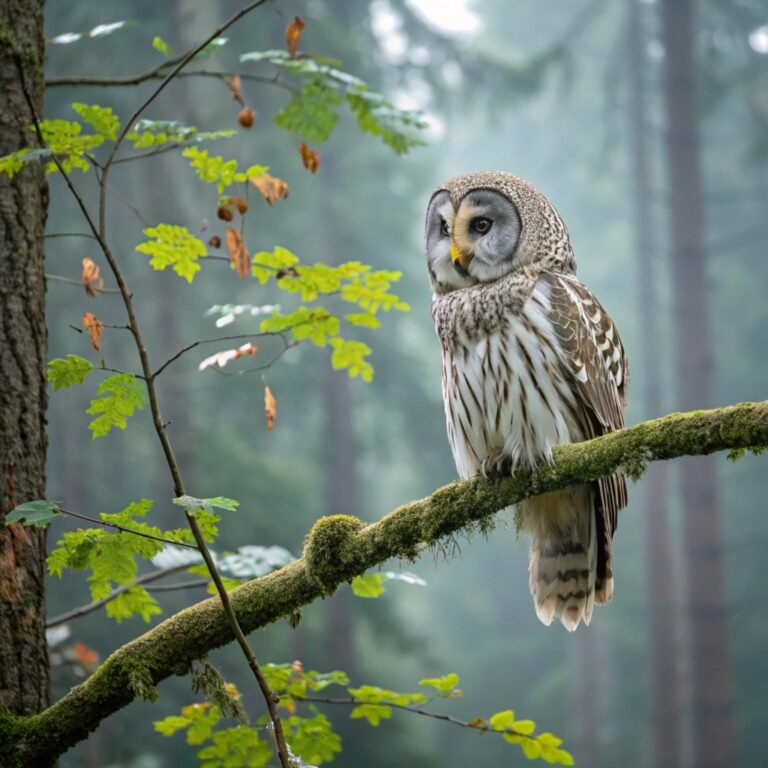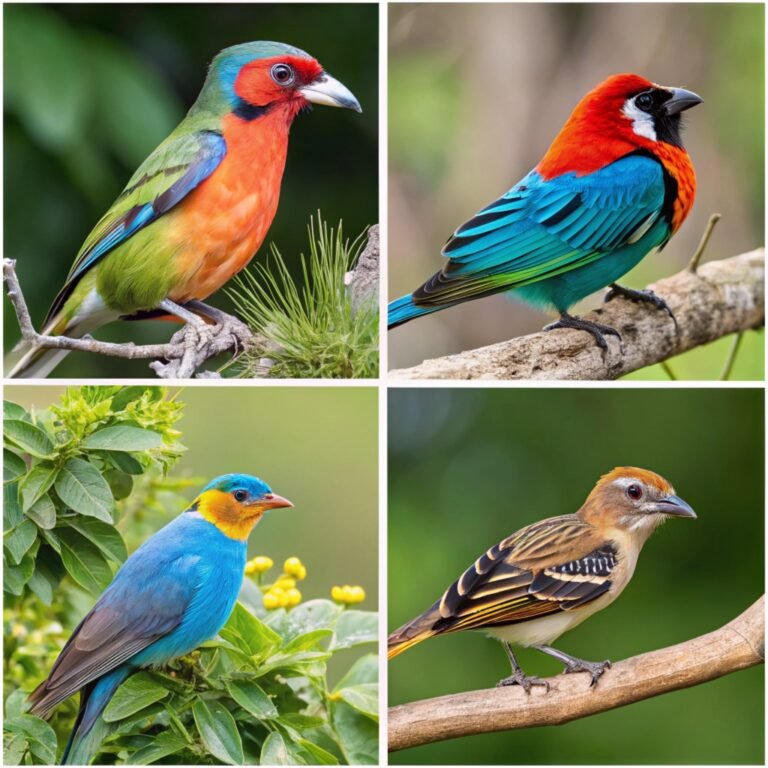The Amazing Blue Cardinals Songbirds: Exploring Habitat, Behavior, and Conservation
The concept of blue cardinals often sparks curiosity among birdwatchers and nature enthusiasts. However, it’s important to clarify that blue cardinals do not exist as a natural species. This misconception likely arises from the confusion between cardinals and other blue-colored songbirds.
True cardinals, belonging to the genus Cardinalis, are typically known for their vibrant red plumage, with the Northern Cardinal being the most recognizable example.
The idea of a blue cardinal may stem from sightings of other blue songbirds that share similar characteristics with cardinals, such as their size, shape, or behavior.

Key Takeaways
- Blue cardinals do not exist as a natural species. The term likely refers to other blue songbirds mistaken for cardinals.
- Common blue songbirds often confused with cardinals include blue jays, indigo buntings, and blue grosbeaks.
- True cardinals belong to the genus Cardinalis and are typically red in color, with the Northern Cardinal being the most well-known species.
- Blue plumage in birds is caused by structural coloration rather than pigments, resulting from the scattering of light by feather structures.
- Conservation efforts are crucial for protecting various songbird species, including both cardinals and blue-colored birds.
- Birdwatching tips can help enthusiasts identify and appreciate different songbird species in their natural habitats.
- Habitat preservation plays a vital role in maintaining healthy populations of songbirds, including cardinals and blue-colored species.
Introduction to Blue Cardinals
The concept of blue cardinals often sparks curiosity among birdwatchers and nature enthusiasts. However, it’s important to clarify that blue cardinals do not exist as a natural species. This misconception likely arises from the confusion between cardinals and other blue-colored songbirds.
True cardinals, belonging to the genus Cardinalis, are typically known for their vibrant red plumage, with the Northern Cardinal being the most recognizable example.
The idea of a blue cardinal may stem from sightings of other blue songbirds that share similar characteristics with cardinals, such as their size, shape, or behavior.
This article aims to explore the world of songbirds often mistaken for blue cardinals, delve into the fascinating aspects of bird coloration, and provide insights into the conservation and appreciation of these beautiful avian species.
The Truth About Cardinal Colors
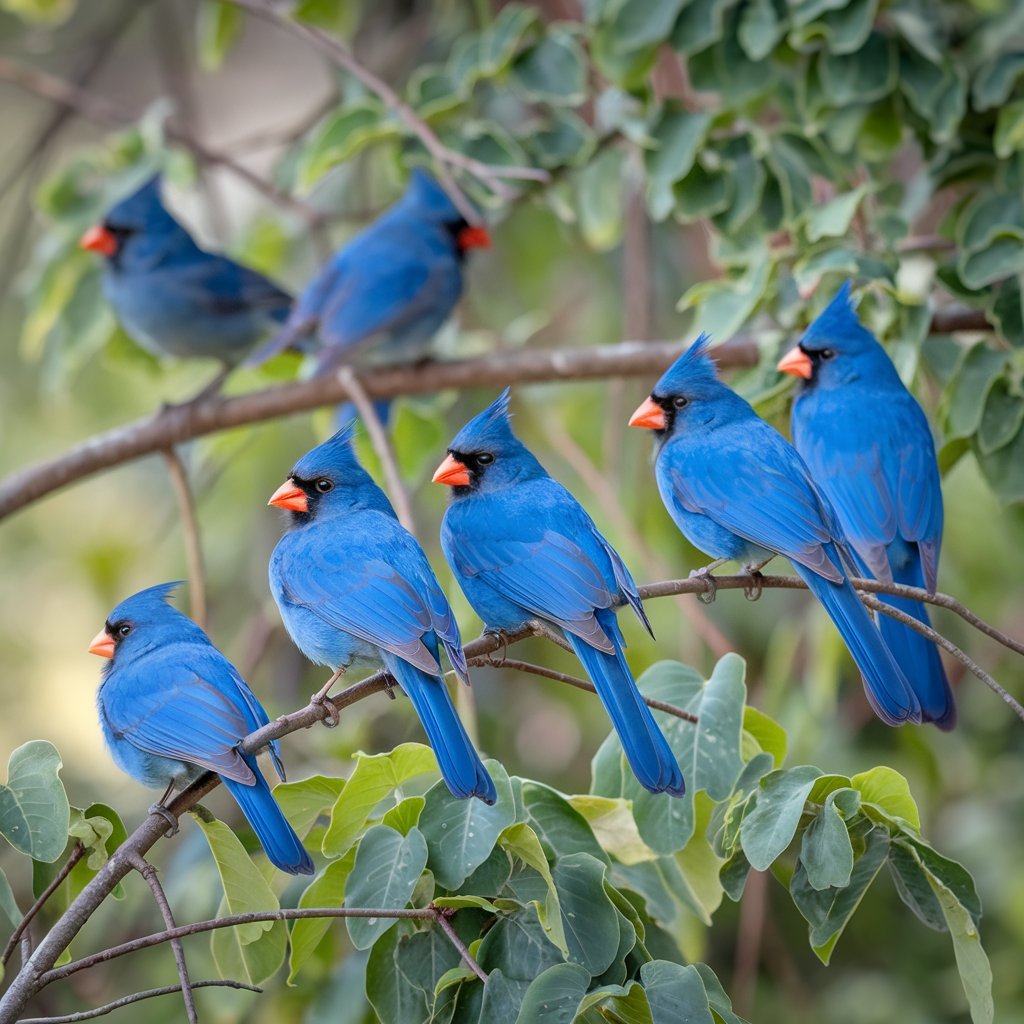
When discussing cardinal colors, it’s crucial to understand that true cardinals are not blue. The Northern Cardinal ( Cardinalis cardinalis), the most well-known species, is famous for its bright red plumage in males and reddish-brown coloration in females.
This vibrant red color is a result of carotenoid pigments in their feathers. Other cardinal species, such as the Vermilion Cardinal and the Desert Cardinal, also display various shades of red.
The misconception of blue cardinals likely arises from confusion with other blue songbirds or possibly from rare genetic mutations that can affect feather color.
It’s important for birdwatchers and nature enthusiasts to recognize that while cardinals are stunningly beautiful birds, their natural color palette does not include blue. Understanding the true colors of cardinals helps in accurate identification and appreciation of these beloved birds in their natural habitats.
Blue Songbirds Often Mistaken for Cardinals
Several blue songbirds are frequently mistaken for cardinals due to similarities in size, shape, or behavior. The Blue Jay ( Cyanocitta cristata) is perhaps the most common source of confusion.
With its striking blue plumage and prominent crest, it shares some visual similarities with cardinals. Another bird often misidentified is the Indigo Bunting ( Passerina cyanea), known for its brilliant blue coloration during breeding season.
The Blue Grosbeak ( Passerina caerulea) is another species that might be confused with a “blue cardinal” due to its size and bill shape. These birds, while not related to cardinals, are equally fascinating and beautiful in their own right.
Each species has unique characteristics, such as the Blue Jay’s bold personality and distinctive calls, the Indigo Bunting’s melodious song, and the Blue Grosbeak’s deep blue plumage with rusty wing bars. Understanding these differences helps birdwatchers appreciate the diversity of songbirds and avoid misidentification.
The Science Behind Blue Feathers in Birds

The blue coloration in bird feathers is a fascinating aspect of avian biology. Unlike red or yellow colors, which are produced by pigments, blue in birds is created through a phenomenon called structural coloration.
This process involves the scattering of light by nanoscale structures in the feathers. The feather barbs contain tiny air pockets and keratin proteins arranged in a specific way that reflects blue light while absorbing other colors.
This is why blue feathers can appear to change shade depending on the angle of light. Interestingly, if you were to grind up a blue feather, it would appear gray or brown, as the structural arrangement would be destroyed.
Some birds, like Blue Jays, combine this structural blue with melanin pigments to create various shades and patterns. Understanding this complex mechanism behind blue feathers adds to the appreciation of these birds’ beauty and highlights the intricate adaptations in nature.
Habitat and Distribution of Blue Songbirds
Blue songbirds, often mistaken for the non-existent blue cardinals, have diverse habitats and distribution patterns. The Blue Jay, for instance, is widely distributed across eastern and central North America, thriving in both deciduous and coniferous forests, as well as urban areas.
They are adaptable birds, often seen in backyards and parks. The Indigo Bunting prefers open woodlands, brushy areas, and field edges across eastern and central United States, migrating to Central America and the Caribbean for winter.
Blue Grosbeaks favor shrubby areas and overgrown fields in the southern United States, extending their range northward during breeding season. These birds play crucial roles in their ecosystems, often acting as seed dispersers and insect controllers.
Their habitats face challenges from urbanization and climate change, making conservation efforts essential. Understanding the specific habitat requirements of these blue songbirds is crucial for their protection and for maintaining the ecological balance in various regions across North America.
Feeding Habits and Diet of Blue Songbirds

The feeding habits and diets of blue songbirds are diverse and adaptable, reflecting their varied habitats and ecological roles. Blue Jays are omnivorous, with a diet that includes nuts (especially acorns), seeds, fruits, insects, and occasionally small vertebrates.
They are known for their intelligence in food gathering, often caching food for later use. Indigo Buntings primarily feed on seeds from grasses and herbs during non-breeding seasons, switching to a diet rich in insects and spiders during breeding season to meet the protein demands of raising young.
Blue Grosbeaks have a similar dietary pattern, consuming seeds, insects, and snails. Their strong beaks are well-adapted for cracking open seeds and hard-shelled insects.
These birds often forage on the ground or in low vegetation, playing important roles in seed dispersal and insect control in their ecosystems. Understanding their feeding habits is crucial for conservation efforts and for attracting these beautiful birds to backyard feeders, where they often enjoy sunflower seeds, millet, and suet.
Breeding Behavior and Nesting Habits
The breeding behavior and nesting habits of blue songbirds are fascinating aspects of their life cycles. Blue Jays typically form monogamous pairs and work together in nest building, usually in trees or large shrubs.
The female lays 3-7 eggs and incubates them for about 16-18 days, while the male provides food. Indigo Buntings also form monogamous pairs for each breeding season. The female builds a cup-shaped nest in low vegetation and lays 3-4 eggs, incubating them for about 12-13 days.
Males are known for their persistent singing to attract mates and defend territory. Blue Grosbeaks have similar nesting habits, with females constructing nests in shrubs or small trees. They typically lay 3-5 eggs, which are incubated for about 12-13 days.
In all these species, both parents usually participate in feeding the nestlings. These breeding behaviors are crucial for population maintenance and are often influenced by environmental factors such as habitat availability and climate. Understanding these patterns is essential for conservation efforts and for appreciating the complex life cycles of these beautiful songbirds.
Vocalizations and Songs of Blue Songbirds
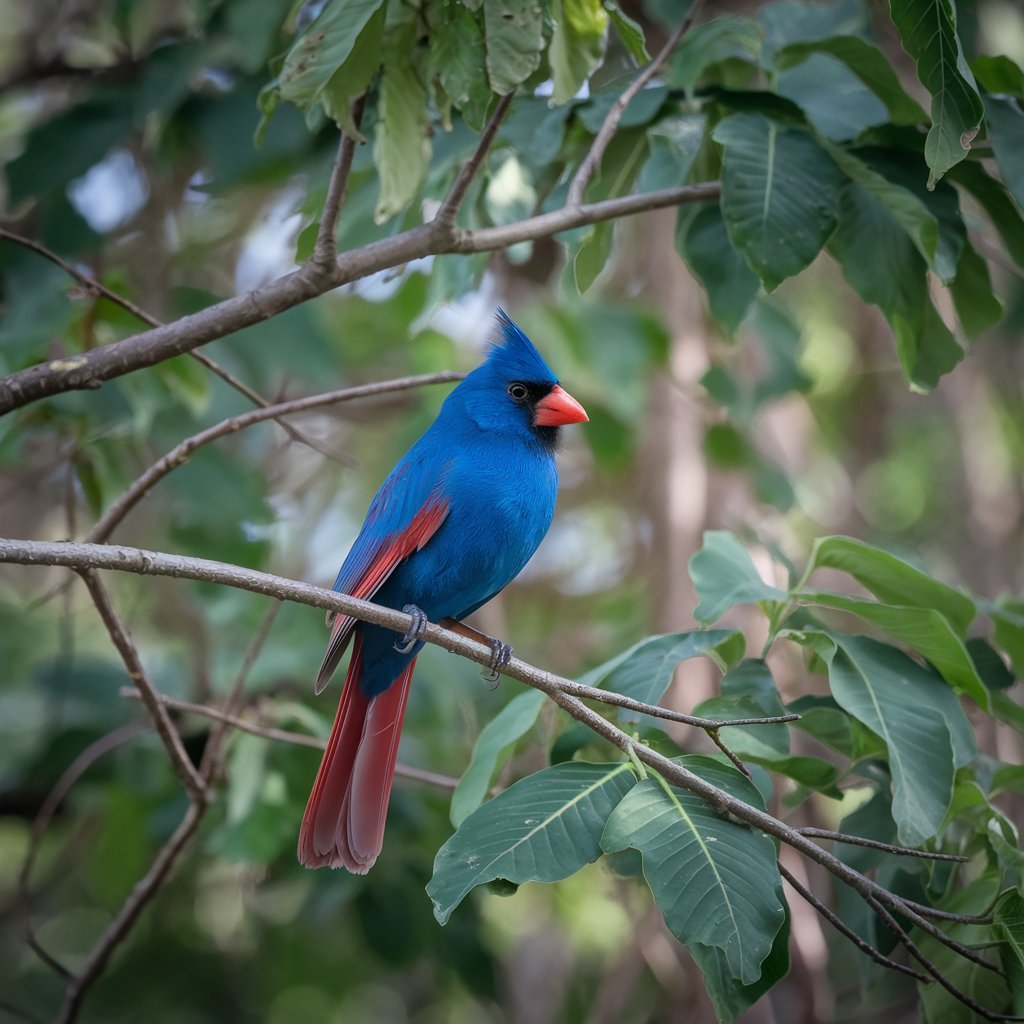
The vocalizations and songs of blue songbirds are not only beautiful but also serve important biological functions. Blue Jays are known for their loud, distinctive calls, which include a variety of harsh “jay” sounds and melodious whistles.
They are excellent mimics, often imitating hawks to warn other birds or scare away competitors. Indigo Buntings have a sweet, high-pitched song consisting of paired phrases, often sung from high perches. Their songs are learned rather than innate, leading to regional dialects.
Blue Grosbeaks have a rich, warbling song that includes a mix of chirps, warbles, and whistles. Males sing to establish territories and attract mates. In all these species, vocalizations play crucial roles in communication, mate attraction, territory defense, and warning signals.
The complexity and variety of their songs contribute to the acoustic diversity of their habitats. For birdwatchers and ornithologists, learning to recognize these distinct vocalizations is key to identifying and appreciating these beautiful blue songbirds in the wild.
Conservation Status and Threats
The conservation status of blue songbirds varies among species, with each facing unique threats in their environments. Blue Jays are currently listed as Least Concern by the IUCN due to their large range and adaptability.
However, they face challenges from habitat loss in some areas. Indigo Buntings, also listed as Least Concern, have shown some population declines due to loss of breeding habitats and pesticide use.
Blue Grosbeaks are similarly categorized but face threats from agricultural intensification and climate change. Common threats across these species include habitat destruction, urbanization, window collisions, and predation by domestic cats.
Climate change poses a significant long-term threat, potentially altering breeding ranges and migration patterns. Conservation efforts focus on habitat preservation, creating bird-friendly urban spaces, and reducing pesticide use.
Citizen science projects and bird monitoring programs play crucial roles in tracking population trends. Understanding these threats and supporting conservation initiatives is vital for ensuring the long-term survival of these beautiful blue songbirds and maintaining biodiversity in their ecosystems.
Birdwatching Tips for Blue Songbirds
Birdwatching enthusiasts can enhance their experiences with blue songbirds by following some helpful tips. For Blue Jays, look in deciduous forests, parks, and suburban areas. They are often vocal and conspicuous, making them easier to spot.
Indigo Buntings are best observed in open woodlands and field edges, especially during breeding season when males display their brilliant blue plumage. Listen for their distinctive songs from high perches. Blue Grosbeaks prefer shrubby areas and overgrown fields; patience is key as they can be more elusive.
Early mornings are generally the best time for birdwatching, as birds are most active. Use binoculars for better viewing and a field guide or birding app for identification. Creating a bird-friendly backyard with appropriate feeders and native plants can attract these species.
Joining local birding groups or participating in citizen science projects like the Great Backyard Bird Count can enhance your birdwatching experience and contribute to conservation efforts. Remember to respect wildlife and their habitats by observing from a distance and following ethical birdwatching practices.
Attracting Blue Songbirds to Your Backyard

Attracting blue songbirds to your backyard can be a rewarding experience for bird enthusiasts. To create an inviting environment for Blue Jays, offer peanuts, sunflower seeds, and suet in platform feeders or hopper feeders. They also appreciate birdbaths for drinking and bathing.
For Indigo Buntings, provide small seeds like nyjer or millet in tube feeders. Blue Grosbeaks are attracted to sunflower seeds and white millet. All these species benefit from native plants that provide natural food sources and shelter.
Plant oak trees, berry-producing shrubs, and native grasses to create a suitable habitat. Maintain a diverse landscape with a mix of open areas and dense vegetation. Avoid using pesticides, as these birds rely on insects for a significant part of their diet, especially during breeding season.
Provide nesting materials like twigs, grass, and cotton in spring. Creating a water feature like a birdbath or small pond can be particularly attractive. Remember, consistency is key – once birds discover your bird-friendly yard, they’re likely to return regularly, providing ongoing opportunities for observation and enjoyment.
Interesting Facts About Blue Songbirds
Blue songbirds offer a wealth of fascinating facts that highlight their unique characteristics and behaviors. Blue Jays are known for their intelligence and complex social systems.
They have been observed using tools and can mimic the calls of hawks to scare away other birds. Interestingly, their blue feathers are not actually blue but appear so due to light scattering.
Indigo Buntings use stars for navigation during their nocturnal migrations, an impressive feat of natural navigation. Male Indigo Buntings can sing up to 200 songs per hour during breeding season. Blue Grosbeaks have an unusual habit of using snakeskin in their nests, possibly to deter predators.
Despite their name, female Blue Grosbeaks are primarily brown. All these species play important roles in seed dispersal and insect control in their ecosystems.
Blue songbirds have also featured prominently in cultural symbolism and art across various societies. Their vibrant colors and melodious songs have inspired countless poets, artists, and naturalists throughout history, contributing to their popularity among birdwatchers and nature enthusiasts.
Differences Between Cardinals and Blue Songbirds
Understanding the differences between cardinals and blue songbirds is crucial for accurate identification and appreciation of these distinct species.
Cardinals, particularly the Northern Cardinal, are known for their bright red plumage (in males), prominent crests, and thick, conical beaks adapted for seed-cracking. They belong to the family Cardinalidae but are in a different genus ( Cardinalis) from blue songbirds.
Blue songbirds like Blue Jays, Indigo Buntings, and Blue Grosbeaks have varying shades of blue plumage, often with different patterns or color combinations.
Blue Jays, part of the Corvidae family, are larger and have a distinctive crest, while Indigo Buntings and Blue Grosbeaks belong to the same family as cardinals but different genera.
The songs and calls of these species are distinctly different, with cardinals known for their clear, whistling songs, while blue songbirds have their unique vocalizations.
Their feeding habits, nesting behaviors, and habitat preferences also differ, reflecting their diverse evolutionary adaptations. Recognizing these differences enhances the birdwatching experience and contributes to a deeper understanding of avian biodiversity.
Impact of Climate Change on Blue Songbirds
Climate change is having a significant impact on blue songbirds, affecting their distribution, behavior, and survival. Rising temperatures are altering migration patterns, with some species like Indigo Buntings arriving earlier at breeding grounds, potentially leading to mismatches with food availability.
Habitat shifts are occurring as suitable climate zones move northward, forcing birds to adapt or relocate. Blue Jays, being more adaptable, may fare better, but specialized species like Blue Grosbeaks could face challenges in finding suitable habitats.
Extreme weather events, becoming more frequent due to climate change, can disrupt breeding and reduce nesting success. Changes in precipitation patterns affect food availability, particularly insects, which are crucial for nestling development. Phenological shifts in plant life cycles can further complicate food availability for these birds. Long-term studies have shown changes in range boundaries and population densities correlating with climate trends.
FAQs
Do blue cardinals really exist?
No, blue cardinals do not exist as a natural species. The term “blue cardinal” is likely a result of confusion with other blue songbirds that may share some visual similarities with cardinals.
What birds are often mistaken for blue cardinals?
Several blue songbirds are often mistaken for blue cardinals, including Blue Jays, Indigo Buntings, and Blue Grosbeaks. These birds share some characteristics with cardinals but belong to different species.
Why are some birds blue while others are red?
The blue color in birds is due to structural coloration, where light is scattered by nanoscale structures in the feathers. Red coloration, as seen in cardinals, is typically caused by pigments called carotenoids in the feathers.
How can I attract blue songbirds to my backyard?
To attract blue songbirds, provide appropriate food like sunflower seeds, peanuts, and millet in suitable feeders. Create a diverse landscape with native plants, offer water sources, and avoid using pesticides.

Hello, I’m Emily Price, the founder of Birds Affection. As a passionate bird enthusiast and spiritual seeker, I’ve always been fascinated by the symbolic meanings and mystical connections between birds and our lives. On this website, I share my knowledge and insights on the spiritual significance of various bird species, exploring their roles as messengers, guides, and teachers. Through my writing, I aim to inspire and educate others on the profound wisdom and beauty that birds bring to our world. Join me on this journey as we delve into the enchanting realm of bird symbolism and discover the hidden meanings behind these magnificent creatures.


